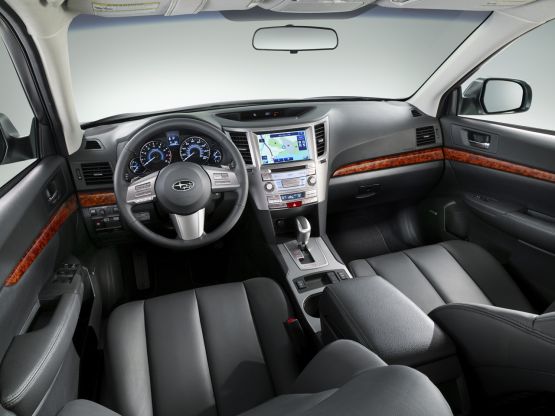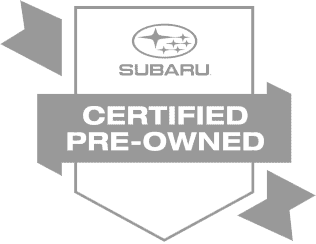INTRODUCTION -> walk around/ Interior -> Driving Impressions
The 2010 Outback looks more like an SUV than the previous generation does. Part of that is due to its taller D-pillar, the rearmost window post.
The new Outback is taller and wider than the previous version. It also features a longer wheelbase, but the body is about an inch shorter overall. Front and rear overhang have been reduced (meaning there's less material hanging out ahead of the wheels and less behind the wheels). That, together with a wider stance, contributes to a more athletic appearance for the Outback.
Long, hawk-eye headlamps are mounted higher than the upright grille, leading to an alert, bolder look. Functional side cladding and rocker panels remind this Subaru is intended to be completely at home on gravel roads. (And, indeed, it is.) At the rear, compound tail lamps blend into a broad rear hatch with a large rear window, integrating the design and helping to define the high beltline that keeps the Outback from being visually top-heavy.
A new roof-rack design is standard. The rack's crossbars are stowed in the roof rails for reduced wind noise, and can be swung into position when needed. The rack is designed so that the existing line of Subaru roof-rack accessories will still fit. A power moonroof is available as optional equipment. The roof rack adds about two inches of height to the Outback; the moonroof subtracts about two inches of front headroom.
Outback 3.6R models are visually identified by 17-inch wheels and larger, 225/60R17 tires, although four-cylinder Outbacks can also be upgraded with the same wheel/tire combination by selecting Limited or Premium trim.
INTERIOR

2010 Subaru Outback Interior
The 2010 Outback is roomier than pre-2010 models. Added roof height makes the new Outback roomier, with an additional 8 cubic feet of passenger space, and another 5.9 cubic feet of cargo area with the seats folded. Front legroom, still ample for taller drivers, has actually been trimmed slightly in favor of making the back seat more comfortable for long trips. Rear legroom is extended by 4 inches, and the use of curved front seatbacks adds knee room as well.
The Outback models we drove had Premium trim and the better, 10-way driver's seat. The standard seats, four-way adjustable, might not be as adjustable, but they are well designed and there is lots of legroom and headroom. The cabin feels roomy, even after a long day of driving.
Utility has been improved in a number of ways for 2010. There is a standard cargo tray, underfloor storage, and grocery bag hooks behind the rear seats.
Past Subaru interiors might have been considered quirky, but the 2010 Outback incorporates mainstream design and content characteristics. The dash and cockpit are built around a sporty, four-dial instrument panel and a contemporary upswept center stack. The new instrument panel includes a multi-information display that indicates outside temperature, fuel consumption, time, and warning functions for seatbelts and passenger air bags. The transmission gear readout is digital. The steering wheel, a three-spoke design, has four large buttons to control the audio system and cruise control. When equipped with an automatic transmission, paddle shifters are located behind the wheel. Taken as a whole, the interior is clean and contemporary, without being excessively ornate.
The parking brake is controlled electronically via a button to the left of the steering wheel, and has a Hill Hold feature. Higher trim levels offer voice activated GPS navigation, rear backup camera, Bluetooth, USB/iPod input and other amenities.
An optional 440-watt harman/kardon audio system combines subwoofer, 6CD changer, and nine speakers with hands-free Bluetooth phone capability.
Make an Inquiry
* Indicates a required field
Hours
- Monday 9:00 AM - 7:00 PM
- Tuesday 9:00 AM - 7:00 PM
- Wednesday 9:00 AM - 7:00 PM
- Thursday 9:00 AM - 7:00 PM
- Friday 9:00 AM - 7:00 PM
- Saturday 9:00 AM - 6:00 PM
- Sunday Closed






